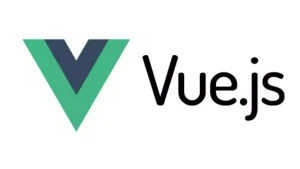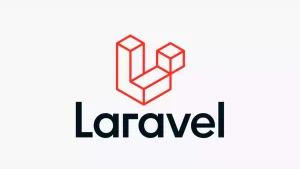Top 20 Best Web Development Tools and Technologies in 2024: Web development is an ever-evolving field, with new tools and technologies constantly emerging to improve websites’ and applications’ efficiency, functionality, and user experience. As we move through 2024, several tools and frameworks have gained significant traction within the web development community. This comprehensive article will explore some of the year’s most popular and impactful web development tools and technologies.
Top 20 Best Web Development Tools and Technologies in 2024
Discover the top 20 best web development tools and technologies for 2024, enhancing your workflow with the latest innovations in coding, design, testing, and deployment.
1. React.js
React.js, maintained by Facebook, remains one of the most popular JavaScript libraries for building user interfaces. It allows developers to create reusable UI components, making the development process more efficient and manageable. With the advent of React 18, developers now benefit from features like automatic batching, which improves performance by reducing the number of re-renders.
Key Features:
- Component-based architecture
- Virtual DOM for faster updates
- Strong community support and extensive libraries

2. Vue.js
Vue.js is another robust JavaScript framework that has seen increasing adoption due to its simplicity and flexibility. Vue 3, the latest version, introduces the Composition API, which provides a more modular and scalable way to manage component logic.
Key Features:
- Reactive two-way data binding
- Virtual DOM for performance optimization
- Comprehensive documentation and ease of integration

3. Angular
Angular, developed by Google, is a robust framework for building dynamic web applications. Angular 13, the latest version, brings improved performance, simplified APIs, and enhanced tooling.
Key Features:
- Two-way data binding
- Dependency injection for better code maintainability
- A comprehensive suite of developer tools

4. Svelte
Svelte takes a different approach from traditional frameworks. Instead of doing much of the work in the browser, Svelte shifts that work into a compile step when you build your app. This results in highly optimized and faster applications.
Key Features:
- No virtual DOM
- Write less code with a simple syntax
- Excellent performance due to compile-time optimizations

5. Next.js
Next.js, a React framework, has become the go-to choice for building server-side rendered (SSR) and static websites. The latest version, Next.js 12, offers features like middleware, which enables powerful customizations and optimizations at the edge.
Key Features:
- Hybrid static & server rendering
- Built-in CSS and Sass support
- API routes for building backend APIs

6. Node.js
Node.js continues to be a foundational technology for server-side programming in JavaScript. Its non-blocking, event-driven architecture makes it ideal for building scalable network applications.
Key Features:
- Asynchronous and event-driven
- A large ecosystem with npm (Node Package Manager)
- Suitable for building real-time applications

7. Django
Django, a high-level Python web framework, promotes rapid development and clean, pragmatic design. Django 4.0 introduces several new features and improvements, making it even more robust and developer-friendly.
Key Features:
- ORM (Object-Relational Mapping) for database interactions
- Built-in admin interface
- High security and scalability

8. Flask
Flask is a lightweight WSGI web application framework in Python. It is designed to be easy to use and flexible, making it an excellent choice for small to medium-sized applications.
Key Features:
- Minimalistic and easy to get started
- Modular and extendable with numerous extensions
- Suitable for microservices and small applications

9. Ruby on Rails
Ruby on Rails, or Rails, is a server-side web application framework written in Ruby. It follows the convention over configuration (CoC) principle, simplifying development by making assumptions about what developers need to get started.
Key Features:
- Convention over configuration
- Active Record ORM for database interactions
- Scaffolding for quickly generating code

10. Laravel
Laravel is a PHP framework known for its elegant syntax and powerful features. Laravel 9, the latest version, improves job batching, route output, and a variety of new features for developers.
Key Features:
- Eloquent ORM
- Blade templating engine
- Comprehensive authentication and authorization

11. ASP.NET Core
ASP.NET Core, developed by Microsoft, is a cross-platform framework for building modern, cloud-based, internet-connected applications. ASP.NET Core 6 introduces minimal APIs, hot reload, and .NET MAUI for cross-platform app development.
Key Features:
- High performance and scalability
- Modular and lightweight
- Cross-platform support (Windows, macOS, Linux)

12. Tailwind CSS
Tailwind CSS is a utility-first CSS framework that provides low-level utility classes to build custom designs without leaving your HTML. It has gained popularity for its flexibility and ease of use.
Key Features:
- Utility-first approach
- Highly customizable
- Responsive design out of the box

13. Bootstrap
Bootstrap, developed by Twitter, remains one of the most popular front-end frameworks for building responsive, mobile-first websites. Bootstrap 5 brings new features like a redesigned grid system, enhanced forms, and no dependency on jQuery.
Key Features:
- Extensive pre-styled components
- Responsive grid system
- Strong community support and documentation

14. GraphQL
GraphQL, developed by Facebook, is a query language for your API that provides a more efficient, powerful, and flexible alternative to REST. It allows clients to request only the data they need.
Key Features:
- Declarative data fetching
- Strongly typed schema
- Real-time updates with subscriptions

15. Docker
Docker is a tool designed to make creating, deploying, and running applications using containers easier. Containers allow developers to package an application with all its dependencies, ensuring it runs consistently across different environments.
Key Features:
- Lightweight and portable containers
- Consistent development and production environments
- Extensive ecosystem and community support

16. Kubernetes
Kubernetes is an open-source platform designed to automate deploying, scaling, and operating application containers. It has become the standard for container orchestration in cloud-native applications.
Key Features:
- Automated container orchestration
- Self-healing capabilities
- Scalability and load balancing

17. Webpack
Webpack is a static module bundler for modern JavaScript applications. It processes application dependencies and generates optimized output bundles, improving application performance.
Key Features:
- Module bundling
- Code splitting for performance optimization
- Extensive plugin ecosystem

18. Jest
Jest is a delightful JavaScript testing framework developed by Facebook that is designed to ensure the correctness of any JavaScript codebase. It provides a great developer experience with features like zero configuration and instant feedback.
Key Features:
- Zero configuration setup
- Snapshot testing
- Parallel test execution

19. Cypress
Cypress is a front-end testing tool built for the modern web. It aims to make testing easy and reliable, focusing on developer productivity and fast, consistent testing.
Key Features:
- Real-time reloads
- Automatic waiting
- Powerful debugging capabilities

20. Figma
Figma is a collaborative interface design tool that allows multiple designers to work on the same project simultaneously. It has become a favorite among UI/UX designers for its intuitive interface and powerful features.
Key Features:
- Real-time collaboration
- Vector networks
- Prototyping and design systems

Conclusion
The web development landscape in 2024 is rich with tools and technologies catering to various needs and preferences. Whether you’re a front-end developer, backend developer, or full-stack developer, there’s a tool out there to help you build better, faster, and more efficient web applications. Staying updated with the latest trends and mastering these tools can significantly enhance your productivity and the quality of your work.
Embrace these tools and technologies, experiment with them, and incorporate the ones that best suit your workflow and project requirements. The future of web development is exciting, and these tools are at the forefront of shaping that future.








